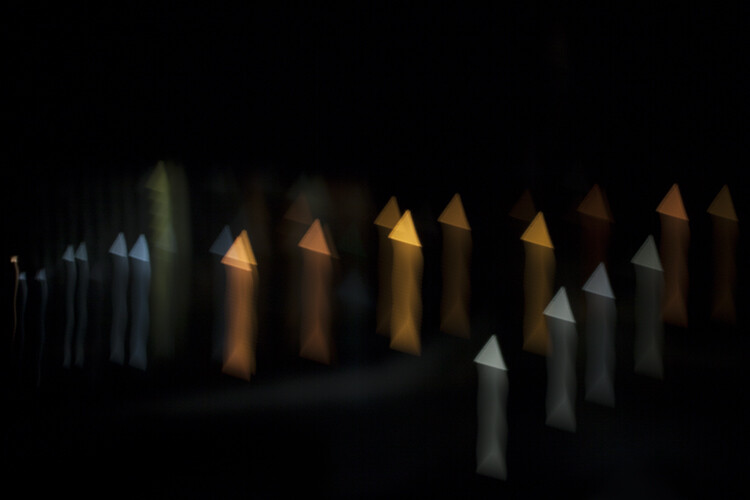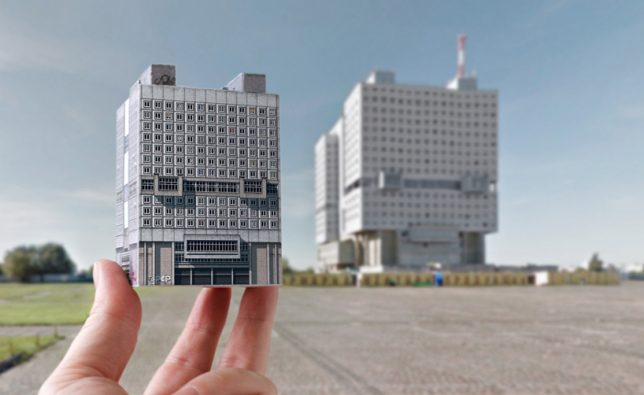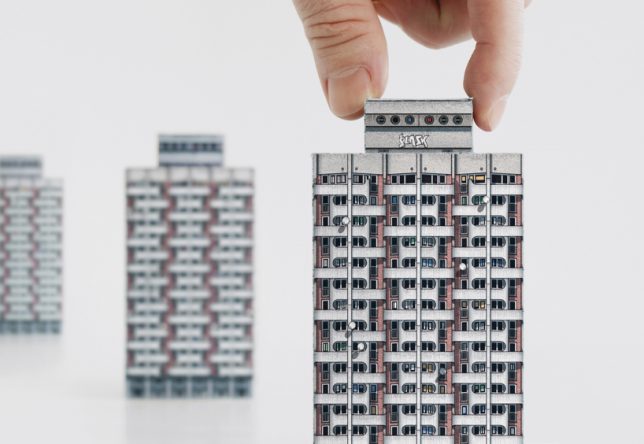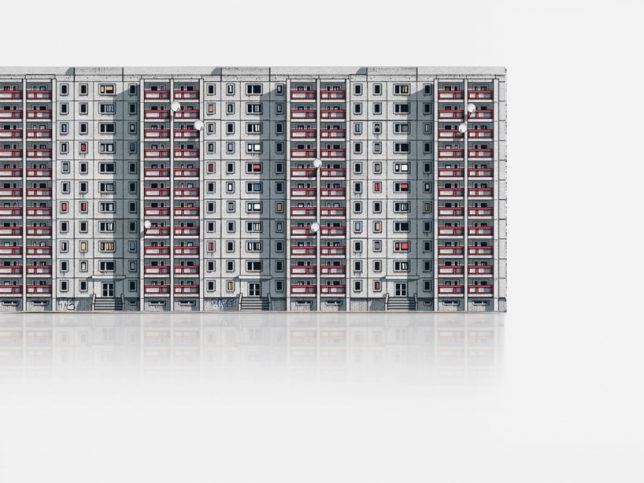 |
| Mr. Mizoguchi and Mr. Tokura took the time at CP+ 2017 to discuss Canon’s future with us. |
Just prior to CP+ 2017, Canon announced three new consumer cameras in the mirrorless EOS M6, the DSLR EOS 77D and EOS Rebel T7i . We had the chance to catch up with Canon while in Japan covering CP+ and discussed the company’s current state of affairs, as well as its future (in relation to mirrorless).
Specifically, we spoke with Go Tokura, Executive Officer and Chief Executive for Image Communication Business Operation and Yoshiyuki Mizoguchi, Group Executive of ICB Products Group, Image Communication Business Operation.
Please note that this interview was conducted through an interpreter, and has been edited slightly for clarity and flow.
What is Canon’s main strategic focus going forward into the next product cycle?
We can break down our focus into two areas: improving our network connectivity and video. We still have a lot of room to grow in the video area in terms of what we can offer. And in terms of customer strategy, we want to continue to build new users, specifically enticing more entry-level users.
Where do you see most demand for 4K, and are you beginning to see beginners ask for 4K video?
Whether you’re a professional or at the entry-level, you likely want high-quality video. And we think there is potential for the entry-level to grow. So we will obviously be looking at introducing our 4K technologies down to the entry-levels at some point.
But introducing 4K to the entry-level is linked to the 4K TV market. How quickly that takes off and penetrates will tell us how and when we should introduce 4K to more affordable cameras.
Looking at 4K TV saturation, what kind of time-frame does that suggest and when do you think it will be necessary to have 4K in every part of your product line?
We obviously have to look at the technical feasibility of it, cost-wise, as well as [the challenge of power consumption]. Those factors will tell us how we will introduce 4K technologies going forward.
We will continue to challenge and overcome these technical hurdles that we are seeing at moment in introducing 4K into our entire product lineup. But it is important to keep in mind that we don’t want to harm the original inherent concept of these products. 4K should compliment, rather than hinder.
 |
| The Canon EOS Rebel T7i was announced earlier this month. It shoots 1080/60p. Will we ever see a Rebel with 4K video? Probably, it’s just a matter of when. |
Does Canon have any ambitions to become a manufacturer of high quality monitor displays for enthusiasts and consumers?
We don’t have any plans to enter the consumer display panel market.
We’ve seen companies creating affordable cine lenses for mirrorless videographers. Do you see an opportunity in that market segment?
The Cinema Lens market, including for mirrorless, is a great market. When it comes to cinema lenses you have demand for everything from the professional to the affordable. Overall we’d like to increase the breadth of our share of the market on the affordable end. So we will continue to spend our efforts on that.
The EOS M series continues to expand. What is the long term goal of the M series in terms of market share?
That is a difficult question to respond to with a simple answer because we don’t have a particular number set in terms of getting the market share for the mirrorless market. This is because we are a company that produces [both mirrorless and DSLR], as a total package.
Our intention is to become number one in the overall ILC market: mirrorless and SLR. Different regions would have different penetration and different market share of mirrorless products.
 |
| The EOS M5 is Canon’s flagship mirrorless camera. |
Specifically, which markets are leaning more toward mirrorless and which more toward SLR?
In the Southeast Asian market we’re seeing a real high demand for mirrorless, while the US has the least mirrorless penetration. In terms of the Japanese market we’re seeing a slight majority [of] mirrorless at this time. But having said that, compared to two years ago we’re now seeing a slowing down of mirrorless taking over. We were expecting to see more mirrorless taking off, keeping that momentum, but that has not happened.
Do you think there could be a professional-level EOS M model sometime in the future?
Obviously we think it could be possible, there is a potential, but we do not want to put a time frame on that.
Do you think in a similar way, we may begin to see the L-series lens line expand into EF-M?
The demand for that is still quite limited and so we won’t be able to say. But obviously as people start to look for more professional-level quality and performance, we will extend our lens line to respond to what the customer is looking for.
 |
| Canon has yet to introduce a Dual I.S. system into its mirrorless cameras for fear the stabilized sensor will increase the size and weight. |
If the EOS M series begins to eat away at sales of Rebel DSLRs, do you regard that as a good thing or a bad thing, or is it just inevitable?
We’re letting the customer, market and demand tell us how we should go about approaching different regions. Because if you’re looking at a market with a high level of mirrorless penetration, we would obviously look to push forward with the EOS M series in that region. And we will watch and see: are Rebel users moving on to the EOS M? Frankly, if that becomes inevitable, it is something we will support. Having said that, overall we are looking to simply be number one the combined SLR and mirrorless market, offering a total package.
Has there been any demand from customers to introduce something like Dual IS into Canon’s mirrorless cameras?
We do get customers saying they want more and better IS. However, in the mirrorless market for us, it’s all about satisfying the desire for a small, light-weight camera. In terms of introducing sensor-based stabilization into our EOS-M series, I think it will add weight, which might deter some of our mirrorless customers. Which is why we think optical IS is the way to go for us.
That said, we are aware that our competitors have already introduced this style of sensor-based stabilization. And we do see the merits of having optical and sensor based IS working together. What we’re looking at is trying to evolve ourselves in terms of developing technology so that we can downsize and reduce the weight of a sensor-based IS system.
You’d mentioned Wi-Fi capability being an area of focus in the future. Is that a result of user feedback? If so, what kind of feedback have users given?
Yes that is the result of direct user feedback, like that from our customer service centers. Most responses are regarding “how to use” Wi-Fi, which implies that many customers find it difficult to use. Overall, we can summarize what customers are looking for, regarding connectivity, is overall ease-of-use. To respond to that demand, we’re working to make connecting simpler and have incorporated Bluetooth technology into some of our cameras.
Do you have any plans to enter the VR or 360 markets?
We’re always looking to see what sorts of new visual means of expression we can offer to our customers, 360 imaging included. So, yes, we are considering how we can leverage 360 technology.
That said, we’re already seeing a lot of 360 cameras out there in the market. There are many players at the moment, but none have actually achieved big, great success. I think that’s telling, [and suggests that] that there is something lacking. In other words, if we were to come out with a Canon 360 camera, we would need to have Canon-like added value, ideas and concepts. Unless we do that I think there’s no meaning.
Do you think 360 is going to become the next 3D, where people talk about it for a few years, then it just goes away?
There is a lot of hype at the moment. But in terms of new visual expression, I think there is a value 360 technology adds to the visual world. i don’t think it will die out as 3D did.
Another way to look at it is 360 technology is not just about taking the photo, or the satisfaction of making an image , but how to display it, and how to leverage what you’ve actually taken. I think there has to be a total package for 360 technology to advance into the future.
 |
| Will Canon introduce a VR camera like Nikon did with the KeyMission 360? Only if they see it adding value to the market. |
We’ve seen several brands put out retro-style cameras in recent years. Canon has a long history in the analog camera market. Has there been any talk of launching a product that is a throwback to Canon’s film heritage?
I can’t give a detailed answer to this question, but we do have these customer demands and we’re hearing them. But it’s not to say we’ll be shifting a lot of focus onto such a product, but its rather we are feeling out of what the customer is looking for at the moment.
However I don’t think making such a camera is just about the retro design, it’s about having a retro look and feel, but with the evolution of features Canon currently has to offer.
Tokyo Olympics are coming up in 2020, obviously we’ll see Canon and Nikon DSLR lenses on the sidelines. but how long do you think it will be before we see mirrorless cameras shooting major sporting events?
It’s difficult to project into the future. Looking at mirrorless and it’s current state at the moment, and the timeframe between now and 2020, I don’t think I can envisage mirrorless at the Olympic games.
People [like Reuters, AP etc.] who come as press to something like the Olympics and bring their own gear, obviously they can’t make mistakes – its a once in lifetime opportunity. So my guess is the majority will still be using the cameras they are used to for the time being. In other words, DSLRs.
Film sales are up in 2017. Has there been any talk of perhaps introducing a new Canon film camera? Like an EOS 1V Mark II?
I can say in terms of new products: doubtful. But there are people who still love film and we still offer the EOS-1v from our existing line of film cameras.
Editor’s note:
We’ve interviewed Mr Tokura on several previous occasions, and we were pleasantly surprised with the responses what we received to a lot of questions.
Specifically, it is encouraging to hear just how much Canon values the feedback of its customers. It seems like a lot of decisions about the future are based, at least in part, on customer feedback. All the more reason to be a vocal consumer!
On the same point, it’s exciting to hear that Canon is beginning to regard 4K video capture as something that perhaps it needs to offer in all ILC products, regardless of price. I just hope it makes its way to the Rebel series soon.
Canon’s response to our question about a potential entry in the VR realm was interesting. Essentially, they feel that it is something they will only commit to if they truly feel like they can launch a 360 product that will do right by their customers.
On a similar note, though we may never see an a digital reincarnation of the AE-1, it’s pretty cool to hear that Canon is aware of a customer desire for a retro-designed Canon camera, but (unsurprisingly) won’t make one unless it marries current tech with old-school design principles.
That said, we were a little disappointed to see Canon continue to view mirrorless as a consumer technology and not as something with a potential, in the near future, to be something pro sports and photojournalists reach for.
Canon is a brand with a strong identity, and while we at DPReview may feel like perhaps they entered the mirrorless market a little on the late side, Canon’s caution into jumping into industry trends too quickly doesn’t seem to have done the company any obvious harm. But please, give us 4K at the consumer level.
Articles: Digital Photography Review (dpreview.com)






































































You must be logged in to post a comment.